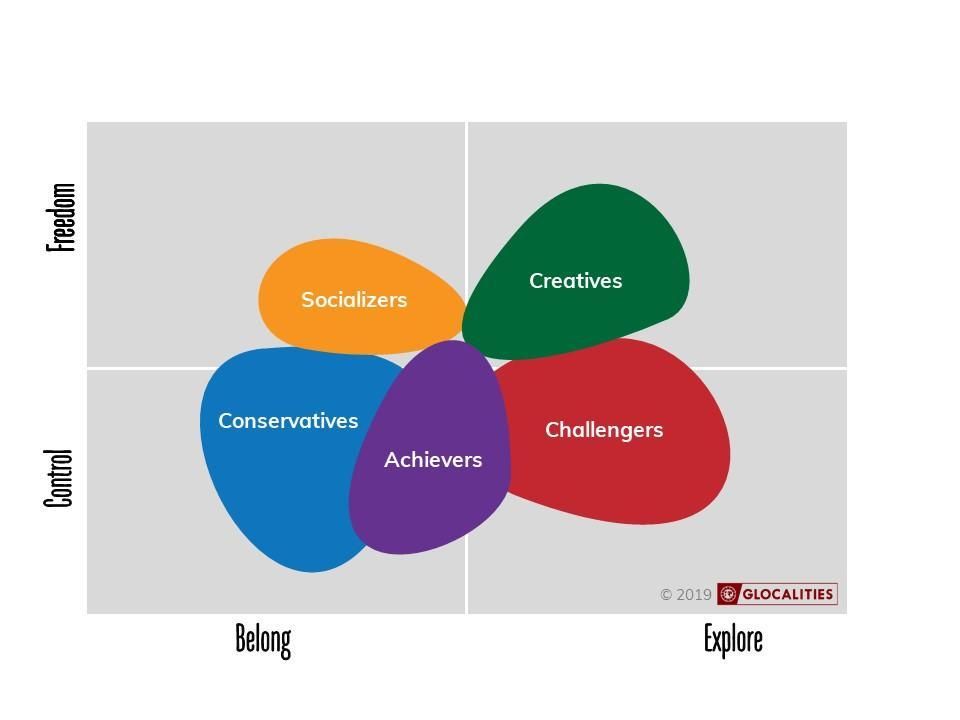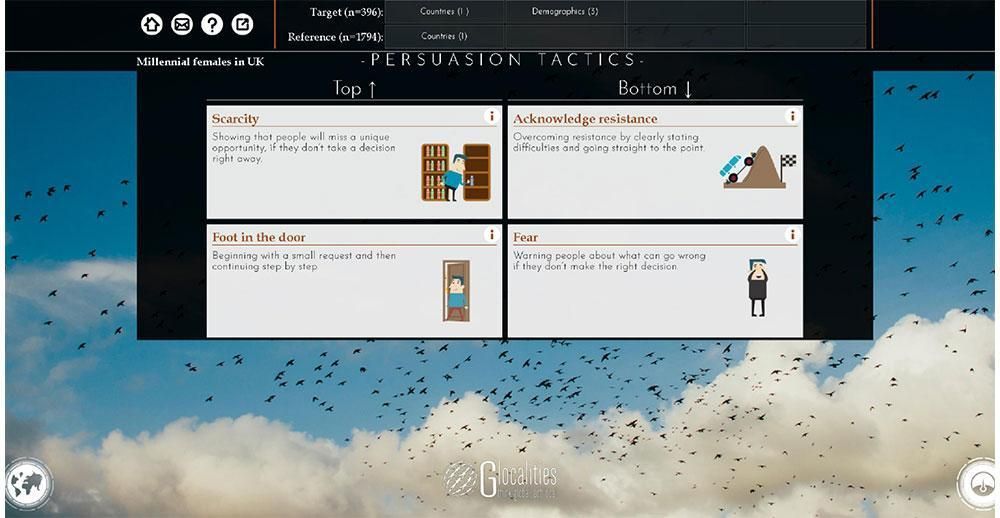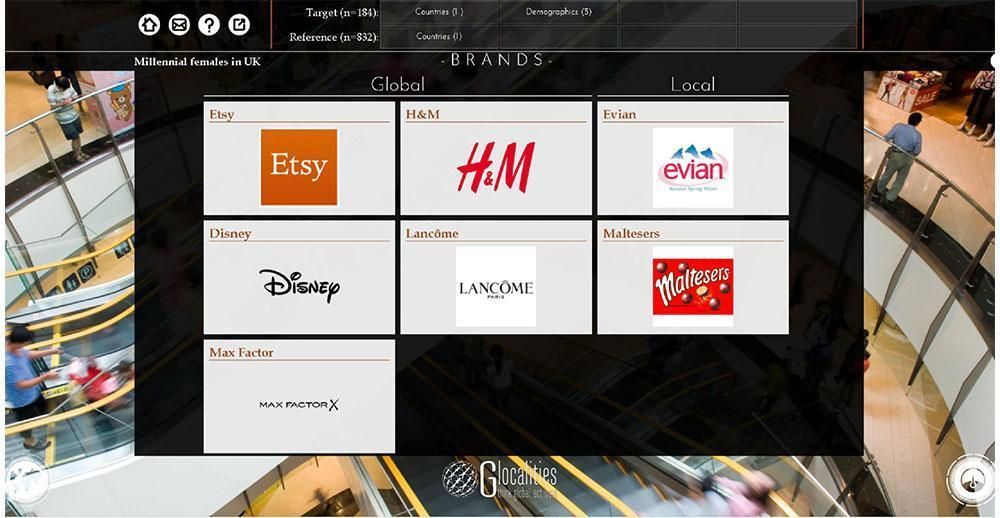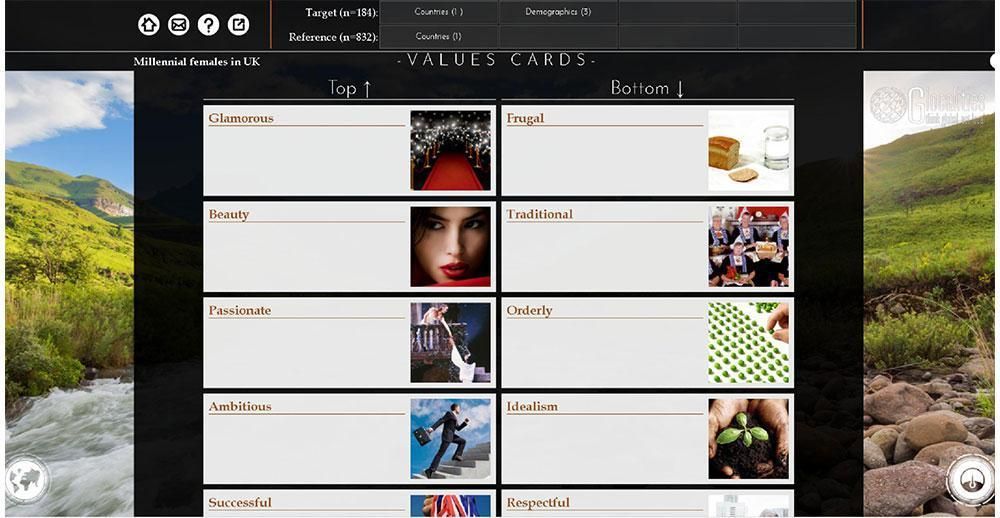Why Most Millennial Marketers are Failing
Millennial marketing holds tremendous potential for brands and NGOs. This audience, comprised of 2 billion people worldwide, is widely regarded as a generation that is shaping the future. Being able to connect with them and sell to this group will be vital to fueling future brand growth. This article will show you how to succeed in Millennial marketing.
Most marketers have a general and oversimplified 'Western biased' view about Millennials. Only 12% of Millennials globally are living in Western countries. Although there are commonalities, Glocalities research reveals that Millennials are an enormously diverse group of consumers. We see diversity not only across countries but also within countries and across cultures. Millennials in countries like the Netherlands, Turkey, Brazil, Sweden, UK, and China, for example, are rather different in their basic-value orientations, lifestyles, preferred brands or celebrity role models.
Millennials Commonalities:
Before we reveal their differences, let us start by discussing what most Millennials, compared to other generations, have in common.
They grew up during an era of the web revolution. This period has had a profound influence on how this generation sees the world. Millennials, more than other generations, are more globally oriented than older generations. Our fast-paced online world has shaped them into being highly competitive. This challenges them to find new ways to stand out.
At the same time, the technology-driven world has created more innovative Millennial individuals, who are open-minded, connected, and have a high drive and vitality to change the world. Networking is essential.
Organizations, brands, and NGOs who want to reach out to this age group also need to be aware Millennials are more flexible and less principled in their orientation. This challenges brands, political parties, and NGOs to win Millennials over and keep them on board. Connecting with their mindset, outlook on life, attitudes, and behaviors is highly important.
Although there are commonalities among Millennials, Glocalities research reveals noticeable differences. Marketers who are missing this point will fail with marketing to Millennials. If they treat all Millennials the same, they may wonder why their messages are not working.
Millennial Differences:
Successful Millennial marketing requires a deeper understanding of the differences between Millennial sub-groups.
To focus on these differences, Glocalities uses a values-based segmentation model that demonstrates a more nuanced understanding of the Millennial generation. This model shows a variation in behavior and opinions shaped by specific value orientations. Let’s focus on this more in-depth look:

The Glocalities segmentation model consists of five values segments: creatives, challengers, achievers, conservatives, and socializers. By applying this Glocalities segmentation model to Millennials, we've identified five different types of Millennials. Each of these five sub-segments of Millennials requires a different marketing strategy.
Download our report “The disruptive mindset of millennials around the globe” for a deeper analysis of these five types of Millennials.
The following examples may help to illustrate this:
One segment among Millennials is more conservative in their outlook on life (15% of all Millennials). This group of Conservatives is underrepresented in the West. They are very traditional in their outlook on life, more frugal, value traditions and family in their own countries, want a clear division between roles of males and females, value etiquette, and are more locally-oriented than other sub-segments. If NGOs want to engage with this group, they need to focus on local issues like for example 'helping poor people in the neighborhood'.
Communicating local issues and solving these is very important. Religion often plays an important role in the life of these Millennials.
On the other hand, we see another Millennial segment, the Creatives, who have a different outlook on life. This sub-segment consists of 23% of the total group of Millennials. Compared with Conservatives, the creatives are more open-minded, typical world-citizens, more interested in ecological-sustainability, they care for human rights, and are more inclined to support an organization like Amnesty International. The creatives are very critical about the current state of the world and activism is important for changing the status quo. Creatives like organizations that take a stand.
These two examples of Millennial sub-segments illustrate the challenge with Millennial marketing. You need to dig deeper to find the segment among those Millennials that fits with your organization.
A more in-depth insight into the values-based differences among Millennials will help you to be more successful in marketing your brand, but also to attract the right candidate for your vacancy. If you are employing Millennials, you need to have a profound knowledge of the specific values-based motives driving all of these groups.
As an example of the differences between these groups, let’s again look at Creatives vs. Conservatives. Creatives are cosmopolitans. These Millennials like a flexible workplace, value diversity in an organization, like to travel and prefer working in flat organizations. Whereas Conservatives prefer hierarchy, need structure and prefer less flexibility. So, as an employer, you have to facilitate the Millennial you want to attract and who fits with your culture.
Get your message across
If you have identified the specific sub-segment among Millennials that match with your brand purpose and the values your organization represents, you can start creating your marketing or communication strategy. Importantly, each of the five Millennial sub-segments requires specific persuasion tactics to attract their attention.
For this reason, Glocalities research discerns 17 specific persuasion tactics to get through to particular audiences. Examples are using humor, social proof, disrupt and reframe (think differently). Each of those persuasion tactics directly leads to very different messages.
Before you can frame that message, you need to understand the values that are driving your specific target group. In other words, find the sweet spot between your product brand or NGO and the persuasion tactic that fits in with who you are and is effective to reach a particular sub-segment among those Millennials.
World of Glocalities application
Glocalities has developed the World of Glocalities tool. With this tool, you can make a journey to look into the specific sub-segment of Millennials that is relevant for your organisation. By comparing particular sub-segments within the larger group of Millennials, you get a precise profile of that specific sub-segment. This comparison will give you a deep understanding of how to communicate with the particular group of Millennials which in turn is likely to fuel your growth.
The following example will illustrate how to use the World of Glocalities application to build your successful campaign. In this case, we will focus on Millennial females in the UK.
With the World of Glocalities app, you can choose the right persuasion tactic that will work for female Millennials in the UK. Furthermore, the insights of the tool will reveal what brands they value, their media behavior, the basic-values orientation that is driving them, elements that are typical of their lifestyle and which personalities they look up to (Icons). The Glocalities tool also helps you to understand which story will resonate with Millennial females in the UK and which visuals would be most appealing to this group.
By combining all that information, you can build a communication strategy that will be successful for that particular target audience. With the app, we can even dig deeper and make specific combinations within Millennial females in the UK. But first, let’s start by understanding this target audience better.
The following images illustrate the insights of the Glocalities Tool for Millennial females in the UK:

Scarcity is an important persuasion tactic

H&M and Evian are brands they like

Value glamour, beauty and passionate
Watch the following demo video to get a deeper understanding of how to apply the World of Glocalities tool to build your communication strategy:
To learn more about this tool, you can download the World of Glocalities leaflet here.
Conclusion:
Millennials show commonalities and a lot of diversity. They are a generation that is highly connected, competitive in their orientation, technologically savvy, open-minded, connected and learn fast. They fuel change and are early adopters of new technology.
However, certainly not all Millennials are the same. For example, there are specific Millennial sub-segments that embrace and feed change the most. Early adoption of new products generated by the evolution of technological change will be led by challengers, creatives, and achievers among those Millennials, each segment in its unique way. It is highly important to understand the sub-segments within Millennials that will make the difference for your organization.
Communication professionals and marketers need to develop target audience specific ways to reach them. Only 12% of Millennials worldwide come from Western countries. The majority of Millennials have another outlook on life. If you want to be successful with your messaging, you need to understand those differences, especially the ones between the ‘West and the rest of the world.’
Multi-nationals, with a global brand purpose, are often focusing on specific values-based audiences in various countries. The differences among Millennials in those countries requires you to choose the right persuasion tactics to communicate your message successfully across cultures.
The World of Glocalities application will help you to translate your global strategies into local communication that is effective among sub-segments of Millennials that are relevant for future growth.


